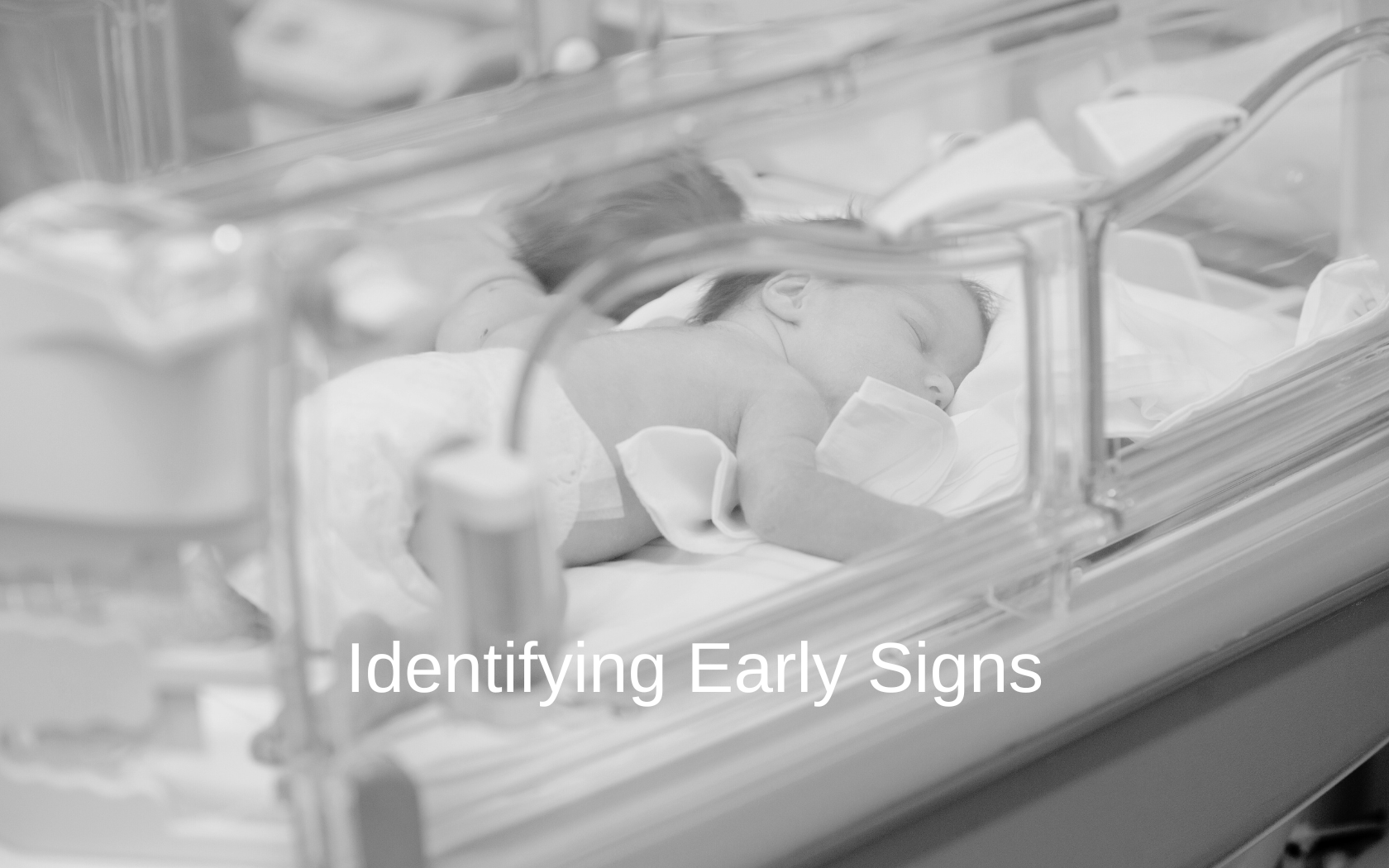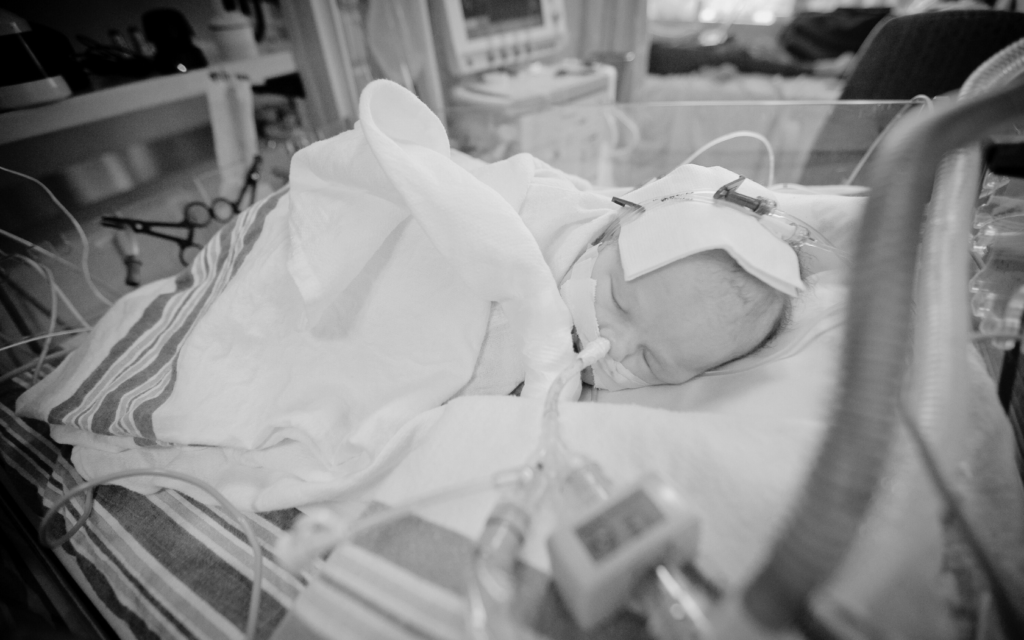Detecting an intracranial hemorrhage in a newborn isn’t as simple as looking for a scrape or cut. But subtle signs of brain bleed in a baby can signal this critical condition. Are you aware of what to watch for? Let’s delve into the essential indicators and information you need to know to ensure your baby’s well-being.

What is an Intracranial Hemorrhage in a Newborn?
The term “intracranial hemorrhage in newborn” means there’s bleeding within the skull of an infant. The bleeding could occur in various parts of the brain or its surrounding structures.
Intracranial hemorrhage (ICH) is a serious medical condition that can lead to significant complications. The complications that a baby may have depend on the location and extent of the bleeding.
Doctors should keep a close watch for signs of brain bleed in a baby. If they catch them, they can treat the baby and prevent damage. Some infants can make a complete recovery.
On the other hand, brain bleeding can cause long-term neurological complications. These include cerebral palsy, developmental delays, and cognitive impairments.
Types of Intracranial Hemorrhage in Newborns
There are several types of ICH in newborns, including:
- Intraventricular hemorrhage (IVH). Bleeding into the brain’s ventricular system, where cerebrospinal fluid is produced and circulates. It’s more common in premature infants. They have fragile blood vessels in the brain at this stage.
- Subarachnoid Hemorrhage (SAH). Bleeding into the space between the brain and the tissues covering the brain (the subarachnoid space). It can occur because of vascular abnormalities. Or, it may be the result of trauma during delivery.
- Subdural Hemorrhage (SDH). Bleeding between the dura mater (the outermost and toughest membrane covering the brain) and the brain itself. It’s the most common type of intracranial hemorrhage in newborns. Often, the cause of SDH is misuse of forceps and vacuum extraction.
Intracerebral hemorrhage (ICH). Bleeding in the brain tissue itself. This type is one of the most serious because it has a direct effect on the brain’s structure and function.

What Causes ICH?
The main causes of ICH are oxygen deprivation or head trauma around the time of birth. This can happen for a variety of reasons. Two examples are prolonged labor and misuse of forceps.
Also, certain factors can put a baby at higher risk of ICH, including:
- Premature Birth: Premature infants are at higher risk, especially for IVH, due to their underdeveloped blood vessels.
- Birth Trauma: Difficult or assisted deliveries can increase the risk of subdural and subarachnoid hemorrhages.
- Maternal Health Issues: Conditions like high blood pressure and infections can contribute to the risk of ICH.
- Neonatal Conditions: Factors such as respiratory distress, low birth weight, and blood clotting disorders also elevate the risk.
- Abnormal fetal presentation: The baby comes out of the birth canal in an abnormal way, such as feet first (breech).
Signs of Brain Bleed in Babies
Symptoms of intracranial hemorrhage in newborns can vary depending on the severity and location of the bleeding. They may include:
- Lethargy or irritability
- Poor feeding
- Seizures
- Apnea (pauses in breathing)
- Bulging fontanelles (soft spots on the head)
- Abnormal eye movements
- Changes in muscle tone (either hypotonia or hypertonia)
If doctors suspect there’s bleeding in the brain, they should conduct tests to make a diagnosis. These tests usually include imaging studies like ultrasound, CT scans, and MRIs.
Treatment for Intracranial Hemorrhage in Newborns
Treating bleeding in an infant’s brain can be challenging. Newborns are tiny and fragile. So supportive care is the main treatment approach. It involves managing vital signs and giving the baby oxygen and nutrition.
If a baby has seizures, doctors can prescribe medicine to control them. They might also administer medication to control pain and treat any underlying conditions like infections or blood clotting disorders.
In severe cases, a baby with a brain bleed might need surgery. Surgical procedures can remove accumulated blood or relieve pressure on the brain.

What’s the Prognosis for a Baby with ICH?
With correct management, a baby might not suffer any long-term effects from a brain bleed. But large hemorrhages or those in critical areas of the brain tend to have a worse prognosis. Also, premature infants have a higher risk of complications.
Early detection is also key to a better prognosis. This means the medical team needs to respond to any signs of brain bleed in the baby right away. Should they fail to do so, the risk of permanent disability is much higher.
Failing to meet the standard of care for a baby with a brain bleed is medical negligence. If your baby was a victim of negligence, call or message our birth injury legal team. You may be eligible for compensation that can help you afford the treatment your child needs.




